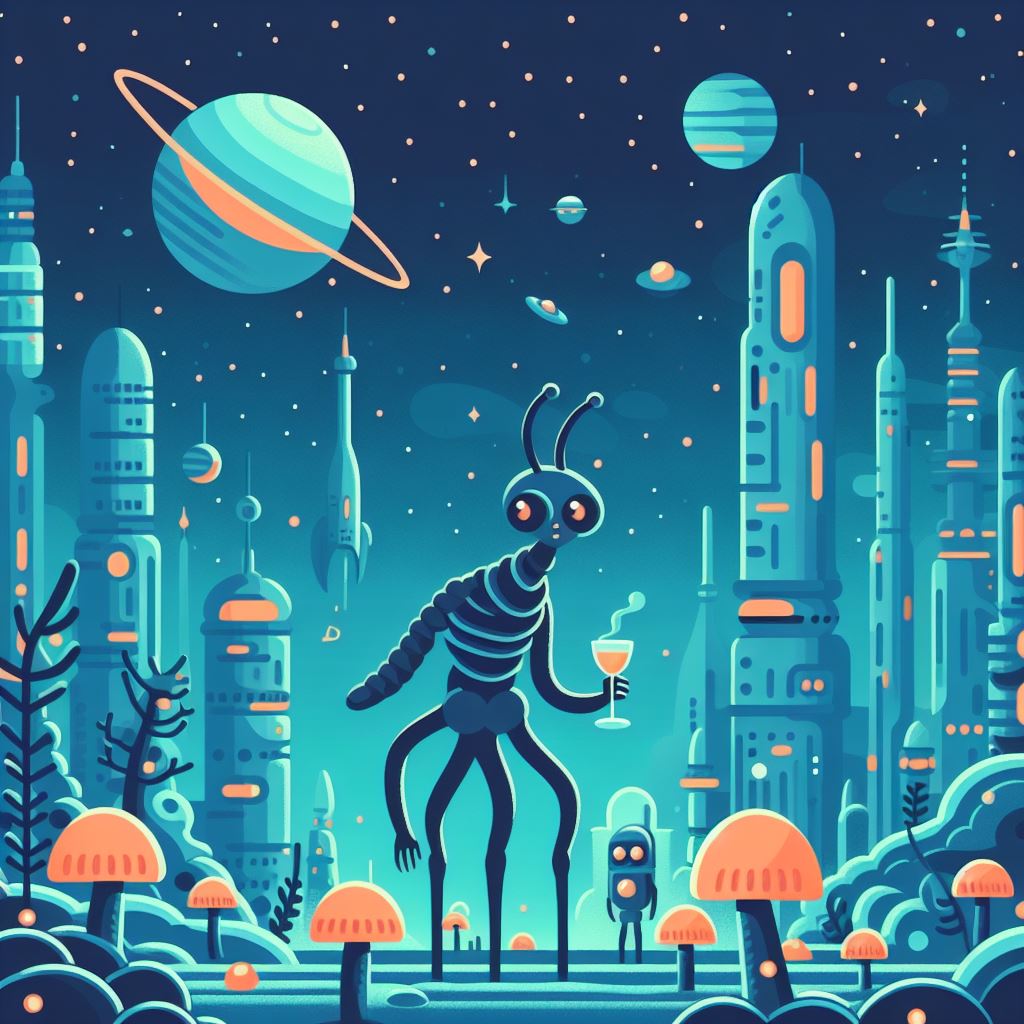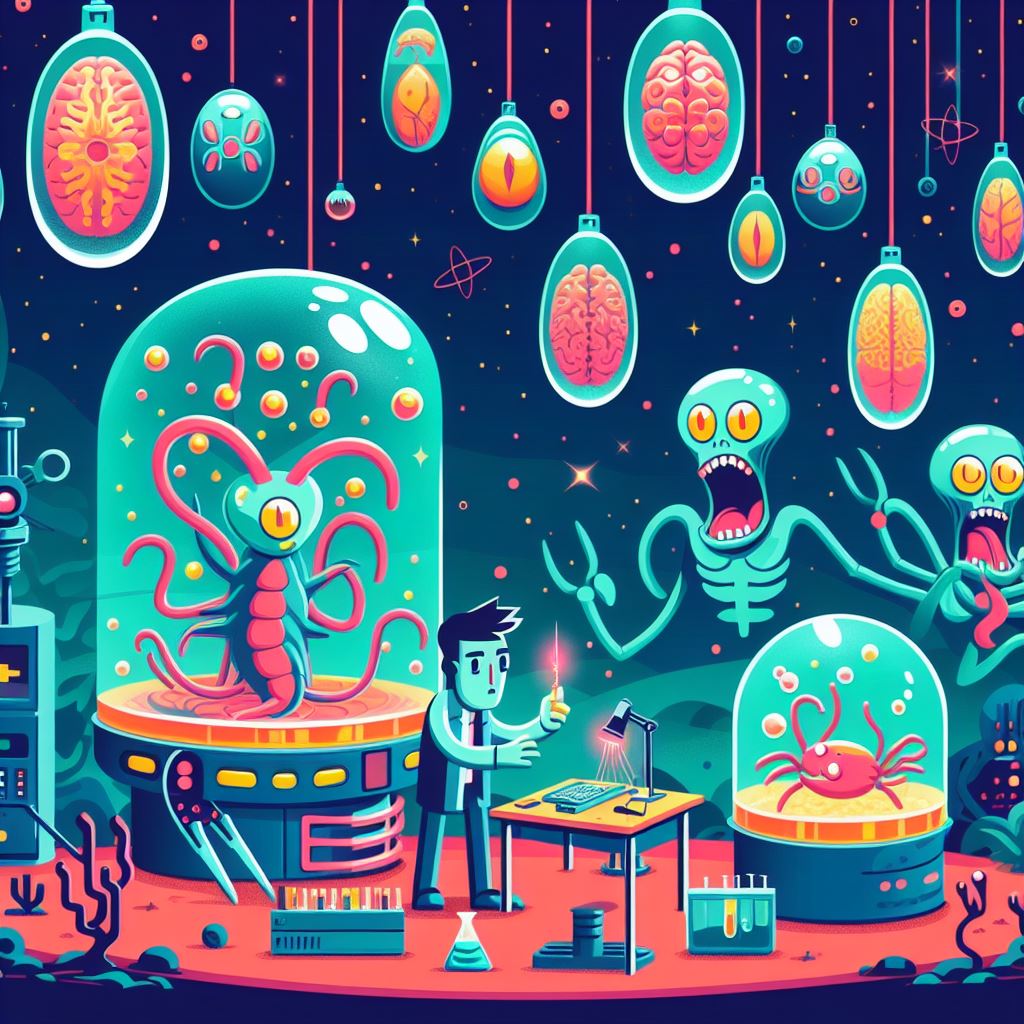The question of whether we are alone in the universe is one that fascinates both scientists and the general public alike.

As a scientist, it is a question I think about often, and one I most want an answer to. But that answer depends a lot on what kind of life is favored in the cosmos – if any at all.
In this article, I explore the factors that may determine how common complex, intelligent life is beyond Earth. On our own planet, the story of life has been dominated by single-celled organisms for over 3 billion years. Earth formed 4.5 billion years ago, with the first fossil evidence of life appearing 3.5 billion years ago.
For nearly 2 billion years, all life consisted solely of prokaryotic single-celled creatures. While amazing biochemical processes evolved in these cells, multicellularity did not emerge until about 700 million years ago.
What can we deduce from the fact that our planet was inhabited solely by bacteria and other microbial life for so long?
It suggests that evolutionary success does not require multicellularity or complexity akin to macroscopic animals. Single-celled life during this era evolved remarkable nano-scale machinery for diverse functions – photosynthesis for energy production, complex intracellular transportation, and ingenious metabolisms. Arguably, in terms of sheer biochemical complexity, this single-celled biosphere had become quite sophisticated even without macroscopic organisms. Perhaps single-celled life is the most common result when life emerges on other worlds as well.
The tendency towards multicellularity could be more unique to Earth’s circumstances. Without further data from extraterrestrial biospheres, we cannot conclude either way. Another potential barrier to complex life relates to planetary atmospheres and oxygen. When life first emerged on Earth, the atmosphere was likely a mix of nitrogen and carbon dioxide. It was not until about 2.4 billion years ago that oxygen became a substantial component, accumulating over time as a byproduct of a new form of photosynthesis.
The introduction of oxygen into Earth’s atmosphere turned out to be a crucial factor in the subsequent evolution of complex life. As organisms evolved means to utilize oxygen, energy availability increased dramatically - jumpstarting the evolution of larger, more complex creatures. Some astrobiologists have proposed that only oxygen provides the right chemical conditions to support the metabolic demands of motile, multicellular animal life. So the late oxygenation of Earth’s atmosphere could have been a prerequisite for creatures like ourselves to eventually form.
Planetary atmospheres may also impact habitability in other ways. It has long been hypothesized that stars have a “habitable zone” of distances where liquid surface water can exist on orbits. However, astrobiologist Eddie Schwieterman and colleagues have proposed the concept of a habitable zone specifically for complex life.
On planets further from their stars, heavy greenhouse gas blankets like carbon dioxide would be necessary to maintain surface warmth. But the high CO2 levels tolerated by many microbes would be toxic to most known macroscopic life, potentially limiting animal life to a relatively narrower band of orbits.
So we have several lines of evidence suggesting that on exoplanets, while microbial biospheres may be common, complex animal biospheres may be rare. If true, this would imply that the galaxy holds abundant single-celled alien life but sparsely populated with worlds holding recognizable creatures. However, some caution is warranted before reaching this conclusion.

Firstly, there are hundreds of billions of planets in our galaxy even by conservative estimates, allowing for substantial evolutionary experimentation. Secondly, we know nature finds solutions to challenges that elude our imaginations – perhaps mechanisms could evolve for maintaining complex life in high CO2 environments after all.
Ultimately we cannot draw definitive conclusions without observational data beyond our single biosphere. The good news is that our detection capabilities are now advancing rapidly. The coming decades may provide the first insights into just how lonely or crowded our galactic neighborhood may be. As a scientist, I eagerly await data that can inform extraterrestrial evolutionary theories by revealing whether complex macroscopic life is common – or unique to our remote little planet.